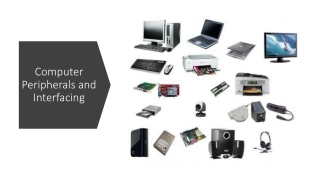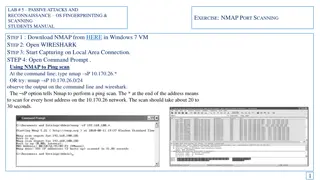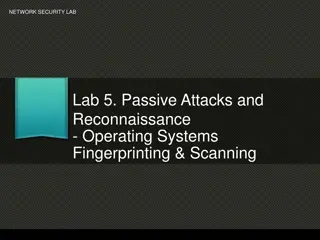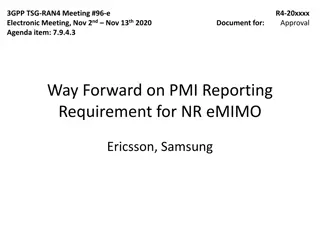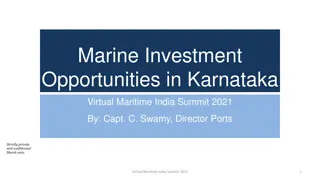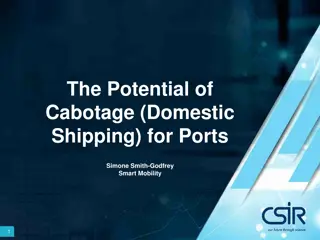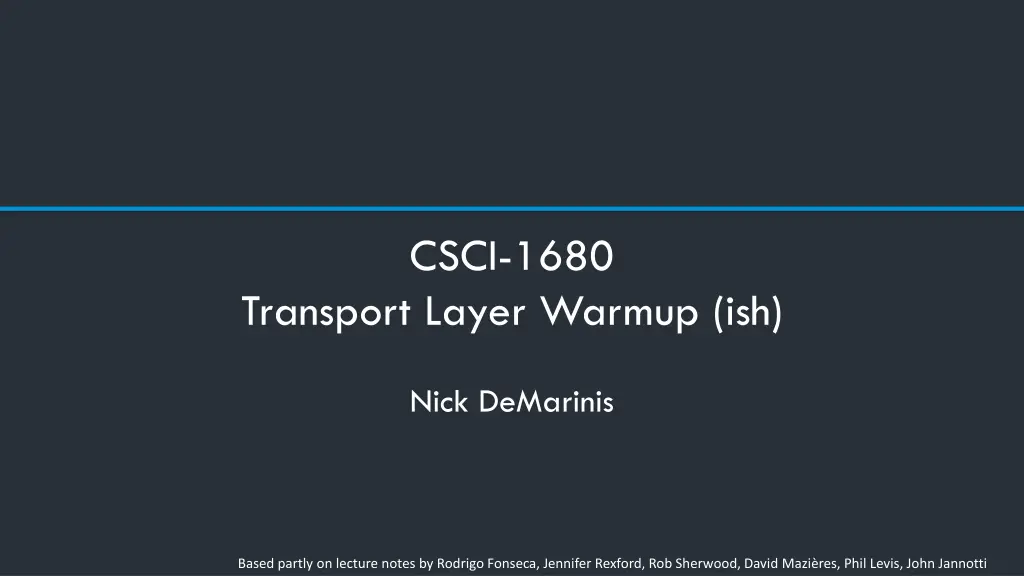
Understanding Network Layers and Protocols
Explore the fundamentals of network layers, services, and protocols, including the transport layer and TCP introduction, with insights on BGP and anycast technology. Learn about the communication aspects between hosts and nodes, and the movement of data across different network links.
Download Presentation

Please find below an Image/Link to download the presentation.
The content on the website is provided AS IS for your information and personal use only. It may not be sold, licensed, or shared on other websites without obtaining consent from the author. If you encounter any issues during the download, it is possible that the publisher has removed the file from their server.
You are allowed to download the files provided on this website for personal or commercial use, subject to the condition that they are used lawfully. All files are the property of their respective owners.
The content on the website is provided AS IS for your information and personal use only. It may not be sold, licensed, or shared on other websites without obtaining consent from the author.
E N D
Presentation Transcript
CSCI-1680 Transport Layer Warmup (ish) Nick DeMarinis Based partly on lecture notes by Rodrigo Fonseca, Jennifer Rexford, Rob Sherwood, David Mazi res, Phil Levis, John Jannotti
Advertised by Export to Warmup Customer Everyone Peer Customers only Given the following AS relationships, Which ASes will A know about? Provider Customers only X Y Z A B C D Customer ( A is customer of X ) Peer
Administrivia: This week IP: Due Thursday Signups for grading meetings after that Code cleanup, README, etc after deadline is okay HW2: Out today, due in ~2wks TCP: Out on Friday Maybe a short intro/gearup on Thursday
This week Start of transport layer Intro to TCP
Anycast Advertise the same prefix (IP) from multiple places => Multiple devices have the same IP!! Used to make certain IPs highly available Public DNS: 8.8.8.8 (Google), 1.1.1.1 (Cloudflare) Problems?
Anycast Advertise the same prefix (IP) from multiple places => Multiple devices have the same IP!! Used to make certain IPs highly available Public DNS: 8.8.8.8 (Google), 1.1.1.1 (Cloudflare) => If you send multiple packets to 8.8.8.8, no guarantee you re talking to the same server! => Protocol must be able to account for this (DNS does, more on this later)
Layers, Services, Protocols Service: user-facing application. Application-defined messages Application How to support multiple applications? Transport Moving data between hosts (nodes) Network Move data across individual links Link Service: move bits to other node across link Physical
The story so far Network layer (L3): move packets between hosts (anywhere on Internet)
How to support multiple applications? Network layer: moving data between hosts Transport layer: abstraction for getting data to different applications on a host
How to support multiple applications? Network layer: moving data between hosts Transport layer: abstraction for getting data to different applications on a host Multiplexing multiple connections at the same IP using port numbers Turns series of packets => stream of data/messages
How to support multiple applications? Network layer: moving data between hosts Transport layer: abstraction for getting data to different applications on a host Multiplexing multiple connections at the same IP using port numbers Turns series of packets => stream of data/messages Provided by OS as sockets Use this abstraction to build other application protocols!
The transport layer MAY provide Reliable data delivery Creating a data stream Managing throughput/sharing bandwidth Congestion control
The transport layer MAY provide Reliable data delivery Creating a data stream Managing throughput/sharing bandwidth Congestion control These are provided by TCP, which is our main focus. However: Not required for all transport layer (UDP has none of these) Other protocols do this too (eg. QUIC)
From Lec 2: OSI Model Application Protocol Transport Protocol Network Protocol Link-Layer Protocol
Whats a port number? 16-bit unsigned integer, 0-65535 Ports define a communication endpoint, usually a process/service on the host
Whats a port number? 16-bit unsigned integer, 0-65535 Ports define a communication endpoint, usually a process/service on the host
Whats a port number? 16-bit unsigned integer, 0-65535 Ports define a communication endpoint, usually a process/service on the host OS keeps track of which ports map to which applications Port numbering port < 1024: Well known port numbers port > 20000: ephemeral ports , for general app use
Some common ports Port Service 20, 21 22 23 25 53 67, 68 80 443 File Transfer Protocol (FTP) Secure Shell (SSH) Telnet (pre-SSH remote login) SMTP (Email) Domain Name System (DNS) DHCP HTTP (Web traffic) HTTPS (Secure HTTP over TLS)
How ports work The kernel maps ports to sockets, which are used in applications like file descriptors to access the network Two modes for using ports/sockets: Listen mode: apps bind to a port to accept new connections Outgoing mode *: make a connection Individual connections use 5-tuple of source-dest port (protocol, source IP, source port, dest IP, dest port) => connection N *: Nick made this term up so it has a name
How ports work The kernel maps ports to sockets, which are used in applications like file descriptors to access the network Two modes for using ports/sockets: Listen mode: apps bind to a port to accept new connections Outgoing mode*: make a connection to another socket *: Nick made this term up so it has a name
How ports work The kernel maps ports to sockets, which are used in applications like file descriptors to access the network Two modes for using ports/sockets: Listen mode: apps bind to a port to accept new connections => Used to receive/wait for new connections Normal mode*: make a connection to another socket => Used to make outgoing connections *: Nick made this term up so it has a name
A B 1.2.3.4 5.6.7.8 listen(80)
A B 1.2.3.4 5.6.7.8 listen(80) connect(1.2.3.4, 80) Src Dst IP 1.2.3.4 5.6.7.8 Port 12345 80
A B 1.2.3.4 5.6.7.8 listen(80) connect(1.2.3.4, 80) Src Dst IP 1.2.3.4 5.6.7.8 Port 12345 80 A must know B is listening on port 80 => "well known numbers"! When connecting, A's OS picks random source port (eg. 12345), for its side of connection
A B 1.2.3.4 5.6.7.8 listen(80) connect(1.2.3.4, 80) Src Dst IP 1.2.3.4 5.6.7.8 Port 12345 80 Src Dst IP 5.6.7.8 1.2.3.4 Port 80 12345 B responds to A using this port
How sockets work Socket: OS abstraction for a network connection (like a file descriptor) Kernel receives all packets => needs to map each packet to a socket to deliver to app Socket table: list of all open sockets Each socket has some kernel state too (buffers, etc.) You will build this!!!
How to map packets to sockets? Kernel table looks something like this: Proto Local (yours) Remote (theirs) Socket IP Port IP Port tcp/udp (some struct)
How to map packets to sockets? Kernel table looks something like this: Proto Local (yours) Remote (theirs) Socket IP Port IP Port tcp/udp (some struct) ... ... ... Value: kernel state for socket (state, buffers, ) Key: 5-tuple of (local IP, local port, remote IP, remote port, protocol)
How to map packets to sockets? Kernel table looks something like this: Proto Local (yours) Remote (theirs) Socket IP Port IP Port tcp 1.2.3.4 12345 5.6.7.8 80 (some struct) ... ... ... Value: kernel state for socket (state, buffers, ) Key: 5-tuple of (local IP, local port, remote IP, remote port, protocol)
Netstat deemer@vesta ~/Development % netstat -an Active Internet connections (including servers) Proto Recv-Q Send-Q Local Address Foreign Address (state) tcp4 0 0 10.3.146.161.51094 104.16.248.249.443 ESTABLISHED tcp4 0 0 10.3.146.161.51076 172.66.43.67.443 ESTABLISHED tcp6 0 0 2620:6e:6000:900.51074 2606:4700:3108::.443 ESTABLISHED tcp4 0 0 10.3.146.161.51065 35.82.230.35.443 ESTABLISHED tcp4 0 0 10.3.146.161.51055 162.159.136.234.443 ESTABLISHED tcp4 0 0 10.3.146.161.51038 17.57.147.5.5223 ESTABLISHED tcp6 0 0 *.51036 *.* LISTEN tcp4 0 0 *.51036 *.* LISTEN tcp4 0 0 127.0.0.1.14500 *.* LISTEN
What if A does: listen(22) Proto Local (yours) Remote (theirs) Socket IP Port IP Port tcp 1.2.3.4 12345 5.6.7.8 80 (normal struct) tcp ... * ... 22 ... * * (listen struct) Value: kernel state for socket (state, buffers, ) Key: 5-tuple of (local IP, local port, remote IP, remote port, protocol) => For listen sockets, some fields may be blank
Ports are part of the transport layer UDP TCP Port numbers are the first two fields of these headers! (Not part of IP!)
An interface to applications Ports define an interface to applications If you can connect to the port, you can (usually) use it! Problems?
Port scanning What can we learn if we just start connecting to well-known ports? Applications have common port numbers Network protocols use well-defined patterns deemer@vesta ~/Development % nc <IP addr> 22 SSH-2.0-OpenSSH_9.1
Port scanning What can we learn if we just start connecting to well-known ports? Applications have common port numbers Network protocols use well-defined patterns deemer@vesta ~/Development % nc <IP addr> 22 SSH-2.0-OpenSSH_9.1 Can discover things about the network Can learn about open (vulnerable) systems
Port scanning What can we learn if we just start connecting to well-known ports? Applications have common port numbers Network protocols use well-defined patterns deemer@vesta ~/Development % nc <IP addr> 22 SSH-2.0-OpenSSH_9.1 Can discover things about the network Can learn about open (vulnerable) systems Port scanners: try to connect to lots of ports, determine available services, find vulnerable services...
Large-scale port scanning Can reveal lots of open/insecure systems! Examples: shodan.io VNC roulette Open webcam viewers
Disclaimer Network scanning is easy to detect Unless you are the owner of the network, it s seen as malicious activity If you scan the whole Internet, the whole Internet will get mad at you (unless done very politely) Do NOT try this on the Brown network. I warned you.
Internet scanning I have done Scanned IPv4 space for ROS (Robot Operating System) Found ~200 things using ROS (some robots, some other stuff)



